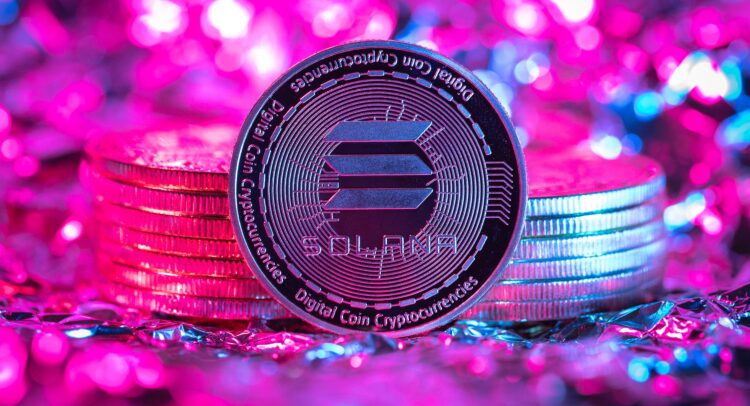Think of Solana (SOL-USD) as the Ferrari of blockchain technology—sleek, fast, and designed to impress. Solana has been making waves in the crypto space with its promise of high scalability and low costs. But like any high-performance vehicle, it has its share of bumps and breakdowns.
Discover the Best Stocks and Maximize Your Portfolio:
- See what stocks are receiving strong buy ratings from top-rated analysts.
- Filter, analyze, and streamline your search for investment opportunities with TipRanks’ Stock Screener.
Solana’s Tech Marvel
Solana isn’t just another blockchain; it’s built to handle a staggering number of transactions at lightning speed. Developed by Solana Labs and managed by the Solana Foundation, its hybrid consensus mechanism—combining Proof-of-History (PoH) and a high-speed synchronization engine—enables it to process around 65,000 transactions per second. In theory, it could reach up to 710,000 transactions per second. This makes it an attractive platform for developers building decentralized applications (dApps), smart contracts, DeFi platforms, and NFT marketplaces.
The Rough Patches
Despite its impressive specs, Solana has hit some rough patches. The network has experienced several significant outages, some lasting more than eight hours. These were often caused by bots exploiting arbitrage opportunities, which overwhelmed the system. These incidents have raised questions about the network’s reliability and stability.
Solana’s price has also been on a rollercoaster ride. After a peak rally to $151, the SOL token saw a 24% correction, which was more pronounced than the overall cryptocurrency market’s decline. This suggests that Solana’s issues might be more acute than a general market downturn.
Solana’s Competition
Solana faces stiff competition from other blockchain platforms, particularly Ethereum. Ethereum’s transition to Ethereum 2.0 and its strong position in the DeFi space pose significant challenges. Moreover, Ethereum’s effective staking rewards and burn mechanism give it an edge, making its ecosystem more attractive to investors.
Solana also lacks the institutional backing that Bitcoin and Ether enjoy through exchange-traded funds (ETFs). This limited exposure can affect its appeal to institutional investors, further influencing its market performance.
What Keeps Solana in the Game
Despite these challenges, Solana has some strong points. Its technology is undeniably impressive, with the potential for high throughput and low costs. The platform supports a wide range of applications, making it versatile and appealing to developers.
Moreover, Solana’s innovative use of the Tower Consensus, inspired by the Practical Byzantine Fault Tolerance (PBFT) system, helps maintain a precise, tamper-proof sequence of events on the blockchain. This reduces the processing power needed and boosts throughput, giving Solana a unique edge.
Year-to-date Solana has been up 39.34% and is currently priced at $138.

Looking Forward
Solana’s journey is a testament to the highs and lows of the crypto world. Solana is a fascinating study of innovation and resilience in the fast-paced world of cryptocurrencies. Whether it will continue to speed ahead or hit more roadblocks remains to be seen, but it’s certainly a crypto asset worth watching.









